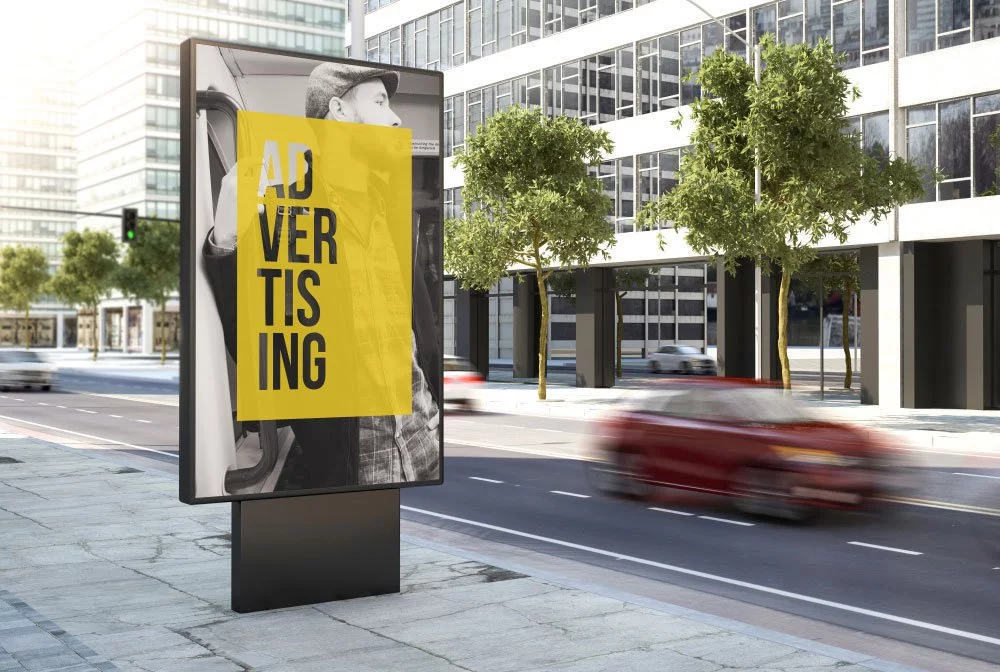While we are living in an increasingly digital world, it’s hard to imagine that there was ever a time before print media was invented. During the earliest civilizations in history, people only relied on oral or word-of-mouth communication. If they had news they wanted to share, they ran to the nearest person to spread the word until everyone heard the news.
Then, people began to write their stories and announcements in picture form and languages — where symbols stood for letters and words. Afterwards, it took the inventions of paper and the printing press before the meaning of print media took shape and came into regular use. Once it became mainstream, there was no turning back. Print media became a daily presence in everyone’s lives.
What is Print Media?
In the simplest terms, the definition of print media is basically any type of printed material that provides people with information through the use of words and/or photos. According to INC.com, the two most common types of print media are newspapers and magazines, but print media also includes outdoor billboards, brochures, newsletters, and books. Basically, it’s any printed material under the sun that contains valuable information about a specific product, event, or even person!
Can you recall those presidential flyers that get pasted on walls that have “Bawal umihi dito. May multa!” and “Post No Bill” signs during election season? Yup! They’re a type of print media.
Today, print media is used all over the world to convey messages and reach a global audience. Through the years, print media has evolved to include entertainment and advertising, instead of only conveying news. It has also transformed the way people perceive products and services from various industries, making it an effective advertising technique.
What are the different forms of print media?
Modern advertising uses various ways to convey their messages to their consumers. The same goes for publications. Print media is one of the most popular forms of modern advertising as it helps them reach a wider target audience. To date, there 6 major types of print media that advertisers and publishing houses use to reach their target audience.
What are the 6 types of print media? Here’s our list:
1. Newspapers

The first Philippine newspaper was established in 1811, making it the oldest form of media in the country. However, even though it has outlived over two centuries, it’s still the most popular type of media in the Philippines. Why? Well, as a developing third-world country, it’s simply the most affordable way for the masses to have access to valuable information.
Newspapers in the Philippines are normally divided into various segments such as current events, sports, entertainment, food, politics, editorial pieces, finances, fashion, and advertisements.
In the case of advertisements, types of ads placed in newspapers include classified ads, display ads, public notes, and pre-printed inserts. To stand out from the rest of the ads, companies usually use witty copy and original headings to stand out from their competitors.
2. Magazines
Love flipping through the glossy pages of Preview, Top Gear, or Good Housekeeping? Can’t blame you, because I too enjoy holing up in my room reading the latest issue of SideTrip Travel. Magazines provide us with detailed and well-written articles on various topics such as food, fashion, lifestyle, sports, finance, and so on that it’s hard not to get hooked. And because most of them are published monthly, we get fresh content every month!
If you want advertise your products or services in magazines, it will cost a bit less compared to newspaper ads — depending on the popularity and readership count of the magazine. For instance, a small image ad in a local newspaper would cost somewhere between Php20,000.00 to Php50,000.00. Enrich Magazine, which distributes nationwide through Mercury Drug stores and has over 500,000 readers, has advertising rates that cost from Php16,500.00 (1/4 page) to Php16,500.00 (full page spread).
3. Direct Mail
Direct mail marketing may sound outdated or passé in this digital age, but it’s still the preferred form of print media by big companies. They’re the top choice for uncluttered campaign and high quality leads.
Why? It’s simple – direct mail has the ability to make personal one-to-one contacts with prospects. Brands like PLDT, BDO, and Globe know this. Direct mail, whether they’re newsletters or brochures, gives a deeper footprint in the brain. It leaves a lasting impression that digital media like email can’t provide.
4. Outdoor Advertising

Outdoor advertising usually comes in two print media forms: billboards and transit posters. Since prospective consumers only have fleeting exposure to billboards and transit posters, the photos must be attention-getting and the copy brief. It’s been said time and time again that a picture is worth a thousand words. Some writers will beg to differ, but you can’t deny that when you’re passing through EDSA, it’s the photos on a billboard that grab your attention before you focus on the text.
The Philippines is big on billboards, which is why outdoor advertising is such a frequently used print media type. In Metro Manila alone, there are over 8,000 billboards according to the Outdoor Advertising Association of the Philippines (as cited in this study of billboards in EDSA). They can cost anywhere from Php300,000.00 to Php500,000.00.
5. Books
Books are the oldest form of print media, providing writers with an opportunity to spread their knowledge about a particular subject or tell fictional stories to help pass the time. While you can’t advertise on books, they’re still an important form of print media as they provide knowledge and enjoyment to all types of people all over the world.
6. Yellow Pages
Last but definitely not the least of the lot, we have the Yellow Pages. While this type of print media is slowly dying due to social media applications (where you can call your friends on Messenger or Viber instead of searching for their home’s landline number) and Google (where you can find virtually all the information you need about a business), it was used widely a decade ago to hunt for elusive business listings. In fact, I clearly remember using our own copies to order pizza from Shakey’s or Greenwich.
Aside from phone numbers and addresses, the Yellow Pages contained ads that were used to target a specific community or geographic area. Before the dawn of foodpanda and GrabFood, that’s where people made decisions about what and where to eat.
Ah, the simpler times of landline phones. Long unused, but never forgotten.
What is the importance of print media?
Now that we know the different forms and uses of print media, what is its significance in this cold, dreary world?
As mentioned before, newspapers and other forms of print media have existed in one way or another since before the Internet was invented. Some industry experts have made bold predictions that physical print publications will cease to exist now that we live in an age where people are addicted to their smartphones.
It might be true for other countries but in the Philippines, print media still thrives. For instance, many Filipinos still prefer reading their local newspapers over the online version. There is just something to be said about the feeling of legitimacy that comes from print. Readers know that they’re reading legitimate information written by educated journalists, instead of relying on fake news that often spreads on social media sites.
What are the advantages of print media?
While print media is important for consumers that hold legitimacy to a high degree, print media also offers several advantages to advertisers, namely:
- It can be targeted
Print media can be tailored to a target audience, both in terms of content, design, and distribution. This means that advertisers can focuse their marketing budget on reaching their prospects and making the material relevant and appealing to them.
- It creates engagement
Print media creates engagement between the brand and the consumer. By providing amusing copy, interesting articles, and special offers through brochures and newsletters, companies create a connection with their readers that lead to brand awareness and sales.
- It can be kept
Ever bookmarked an interesting article, only to forget about it and never read it again? Yep, been there, done that. Unlike webpages, different forms of print media have longer lifespans. Rather than users spending a few seconds on a webpage and then moving to the next shiny thing, magazines and brochures are picked up again and referred back to. They can also be read by family members, friends, and colleagues, maximizing the reach of the marketing campaign.



